LASER INVENTOR
CREATOR OF THE WORLD'S FIRST LASER
About Theodore Maiman
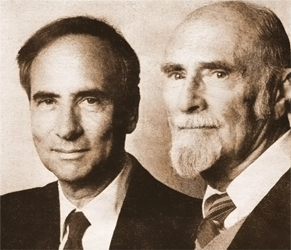
Ted and his father Abe
Theodore Harold Maiman was born on the 11th of July 1927 in Los Angeles. Soon after, his father Abe, an electronics engineer, got a job offer in Colorado, and the family moved to Denver. As a young boy, Theodore (or "Ted") was curious, creative and adventuresome. His father Abe, an inventor himself, introduced him to the world of technology and had a profound influence on developing Ted's passion in electronics.
Abe always kept a small electronics laboratory wherever they lived, either in the basement or the attic. Having access to professional equipment, young Ted was able to design sophisticated projects like audio amplifiers and simple radios. He got his first job, when he was 12, in an electrical appliance repair shop in Denver. Maiman's knowledge of electronics and electricity, which he acquired in his father's laboratory, was more than sufficient to repair everything brought in. At 17, after graduating from high school, he got a job as a junior engineer at the National Union Radio Company in Nutley, New Jersey. During that time, he passed the examination for a first class commercial radio–telephone licence as the youngest person in USA to hold it. Also that year, Maiman enlisted in the US Navy. He was accepted into the radar and communications training program, which furthered and strengthened his electronics knowledge.
After the navy, Maiman attended the University of Colorado, earning a Bachelor of Science in Engineering Physics. His graduate studies were at Stanford University (M.S. in electrical engineering, PhD in physics). His doctoral thesis in experimental physics, under the direction of future Nobel Laureate Willis Lamb, involved microwave-optical measurements of fine structure splittings in excited helium atoms. The doctoral thesis produced jointly submitted papers to the Physical Review (June 1955 and January 1957).
In January 1956, Maiman started work at Hughes Atomic Physics Department (Culver City , California), where he headed the ruby maser project for the US Army Signal Corps. He dramatically improved the performance and design of the maser (reducing its weight from the original 5,000 lbs to 25 lbs) and delivered it on time.
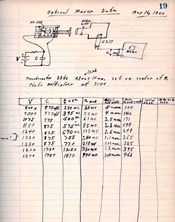 He further refined the maser design, so that the final version worked with liquid nitrogen cooling (previous versions required lower temperatures and worked with liquid helium), and weighed only 4 pounds. He completed the maser project in the summer of 1959 and in August he was finally able to divert his attention to the laser concept, despite of lack of support from Hughes. The "race" to build the laser was in full speed.
He further refined the maser design, so that the final version worked with liquid nitrogen cooling (previous versions required lower temperatures and worked with liquid helium), and weighed only 4 pounds. He completed the maser project in the summer of 1959 and in August he was finally able to divert his attention to the laser concept, despite of lack of support from Hughes. The "race" to build the laser was in full speed.
Thanks to his independent attitude, he won the "race". In May 1960, he demonstrated the laser in action, from a ruby crystal in his laboratory at Hughes in Malibu, where the company had recently moved. It is important to note that Hughes' total expenditures in the period of laser development amounted to about $50,000, while other research groups spent millions of dollars in their unsuccessful struggles to obtain the coherent light.
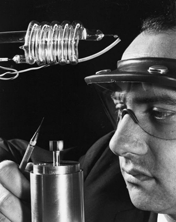 On June 22 of that year, Maiman sent a paper to the Physical Review Letters about his achievement, but received a letter of rejection stating that the publisher was no longer interested in maser related papers. Next, he sent a short version of his paper to the British journal "Nature". Consequently, the first scientific report about the first laser appeared on August 6, 1960 not in the USA but in Great Britain. The paper was titled "Stimulated Optical Radiation in Ruby" (Nature, 1960, v.187, P.493).
On June 22 of that year, Maiman sent a paper to the Physical Review Letters about his achievement, but received a letter of rejection stating that the publisher was no longer interested in maser related papers. Next, he sent a short version of his paper to the British journal "Nature". Consequently, the first scientific report about the first laser appeared on August 6, 1960 not in the USA but in Great Britain. The paper was titled "Stimulated Optical Radiation in Ruby" (Nature, 1960, v.187, P.493).
In 1962, Maiman founded Korad Corporation to develop and manufacture a line of high-powered laser equipment. Korad became the market leader in its field; for example, the ruby laser created at Korad led to lunar laser ranging in 1969. Subsequently he formed Maiman Associates, a management consulting firm which provided technical and management advisory services in high technology fields. He also co-founded Laser Video, Inc., where he developed unique large-screen, laser driven color video displays.
From 1976 to 1983, Maiman was Vice President of Advanced Technology and New Ventures for the Electronics and Defense sector of TRW. He was instrumental in organizing and launching TRW's commercial LSI Products Division, and he introduced fiber-optics technology and advanced array processor products to the company.
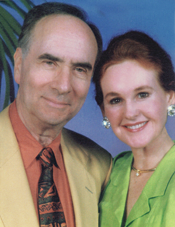 In 1999 he moved to Vancouver with his wife Kathleen, and three years later he was awarded an honorary doctorate from Simon Fraser University. In 2000, Maiman completed a memoir entitled "The Laser Odyssey", outlining the years and months leading up to the completion of the first laser, and his later achievements. Before his death on May 5th, 2007, he was active in the development of the optical engineering and biophotonics curriculum at SFU's School of Engineering Science.
In 1999 he moved to Vancouver with his wife Kathleen, and three years later he was awarded an honorary doctorate from Simon Fraser University. In 2000, Maiman completed a memoir entitled "The Laser Odyssey", outlining the years and months leading up to the completion of the first laser, and his later achievements. Before his death on May 5th, 2007, he was active in the development of the optical engineering and biophotonics curriculum at SFU's School of Engineering Science.
Over his lifetime, Maiman published some 20 papers in professional journals and authored several articles in scientific encyclopedias. He presented invited papers at the American Physical Society, American Optical Society, International Conference on Quantum Electronics, the International YAG Medical Laser Society (1983), international laser medical symposiums in Tokyo, Taipei, and Bangkok, and delivered the opening ceremonial speech at the international Symposium "Laser 73" in Munich.
Dr. Maiman is mentioned in the following popular publications: Time 100, "A Century of Science"; Business Week's "100 Years of Innovation"; Los Angeles Times, "Great Moments in Science and Technology"; Who's Who in the World; Who's Who in America; Who's Who in Frontier Science and Technology; Who Did What (a compendium of the 5,000 people deemed most influential in shaping our world, from the earliest recorded history to the present); and Modern Men of Science.
Maiman is indexed in Encyclopedia Britannica, Americana Colliers, World Book, the New York Times Encyclopedia Almanac, and the Oxford Encyclopedia Almanac. His work is included in the Smithsonian Institute and the National Inventors Hall of Fame.
He was a member of both the National Academy of Sciences and the National Academy of Engineers, and was a Fellow of the American Physical Society, the Optical Society of America, and the Society of Photo-Optical Instrumentation Engineers.
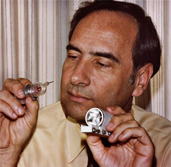 He is the author of the basic patent on the ruby laser (the world's first laser), and has authored patents on masers, lasers, laser displays, optical scanning, and modulation.
He is the author of the basic patent on the ruby laser (the world's first laser), and has authored patents on masers, lasers, laser displays, optical scanning, and modulation.
Dr. Maiman has been the recipient of a number of prestigious awards, including:
· Fannie & John Hertz Foundation Award for "Distinguished Contribution in the Field of Science." Presented in a White House ceremony by Lyndon B. Johnson. 1966.
· Franklin Institute, Ballantine Award for "Pioneer Development of the First Laser."
· Aerospace Electrical Society/American Astronautical Society Award for
"Development of the Laser."
· University of Colorado, Associated Alumni, George Norlin and "Alumnus of the Century."
· American Physical Society, Oliver E. Buckley Prize, for "The Most
Important Contribution to Solid State Physics in the Prior Five Years", 1966.
· Optical Society of America, "R.W. Wood Prize" for "Pioneer Development of the First Laser", 1976.
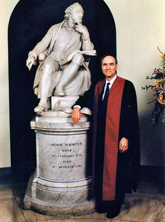 · Wolf Foundation, Physics Prize, 1984.
· Wolf Foundation, Physics Prize, 1984.
· Induction into National Inventors Hall of Fame, 1984.
· Laureate, Japan Prize, in Electro-optics, 1987.
· Honorary Doctorate – University of Cordoba, Argentina, 1993.
· Honorary Fellowship – Royal College of Surgeons of England, 1994 (The only non-physician, non-royal member).

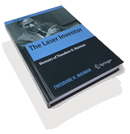
The Books
The Laser Odyssey, released in 2000, gives an inside account of the invention of the laser and tells the story from Ted Maiman's unique perspective.
The Laser Inventor, released in 2018 by Springer, is an extended version of the book. It is available widely, including at Amazon.com and Indigo.